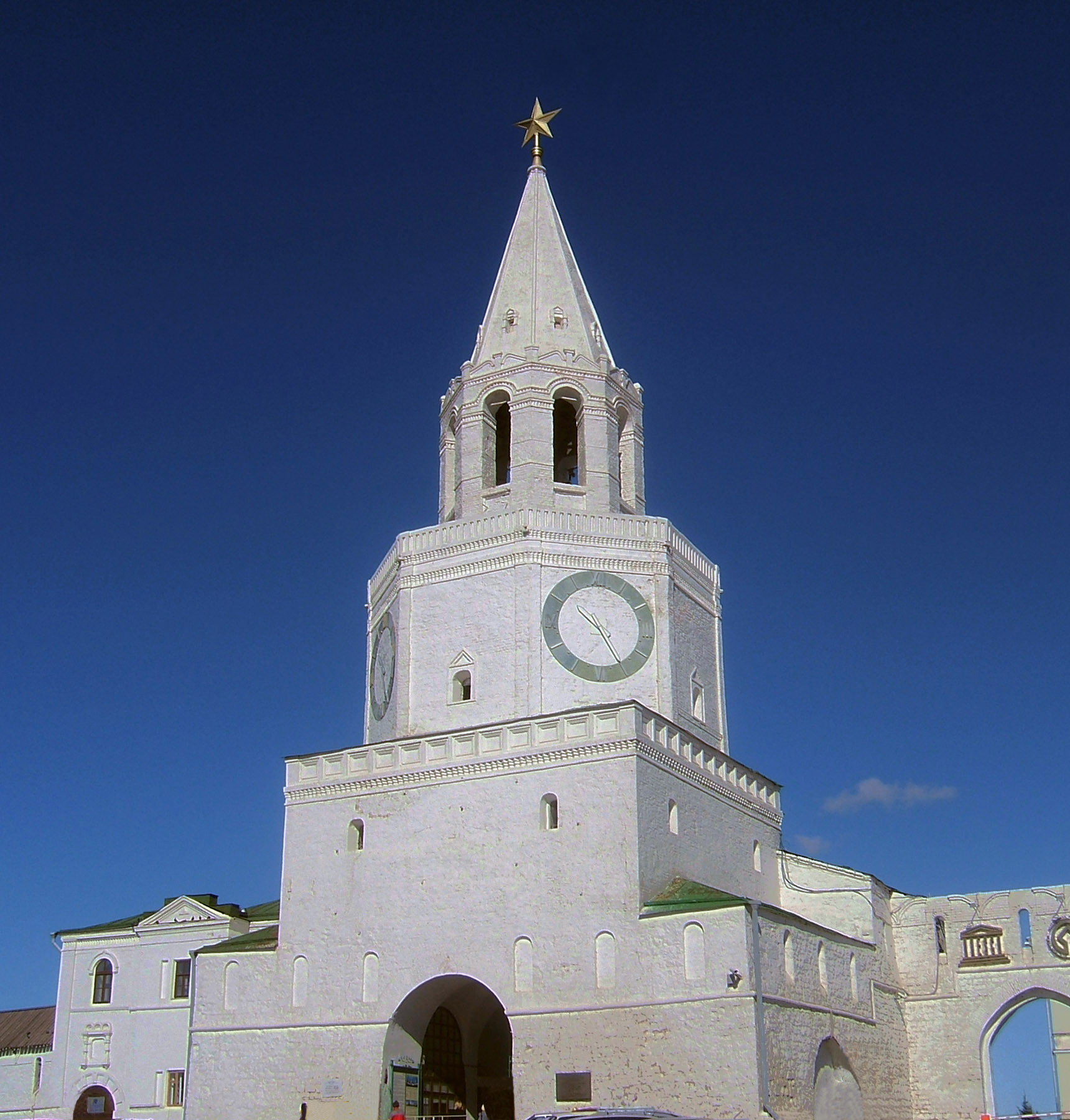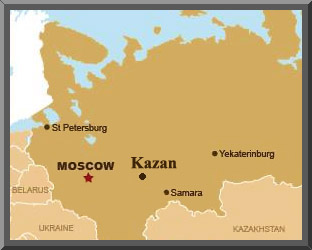|
Michael A. Stecker
|
|
Spasskaya Tower is at the southern end of the Kremlin and serves as its main entrance. The tower is named after the Spassky Monastery, which used to be located nearby. Among the monastery's buildings were the Church of St. Nicholas (1560s, four piers) and the Cathedral of the Saviour's Transfiguration (1590s, six piers). They were destroyed by the Communists during Stalin's rule.
Since its very beginning, the Kazan Kremlin has undergone
various changes, yet it has always played a central role in the region.
Before the 10th century, during its pre-urban period, it was an
unfortified settlement, a humble precursor of the city which would later
blossom into Kazan. Its military and commercial role was developed
in its pre-Mongol days, from the 10th until the middle of the 13th
century, when it became a fort. By the 12th century, it already featured
as a stone fortress, a stronghold on the northern boundary of Volga
Bulgaria.
|

